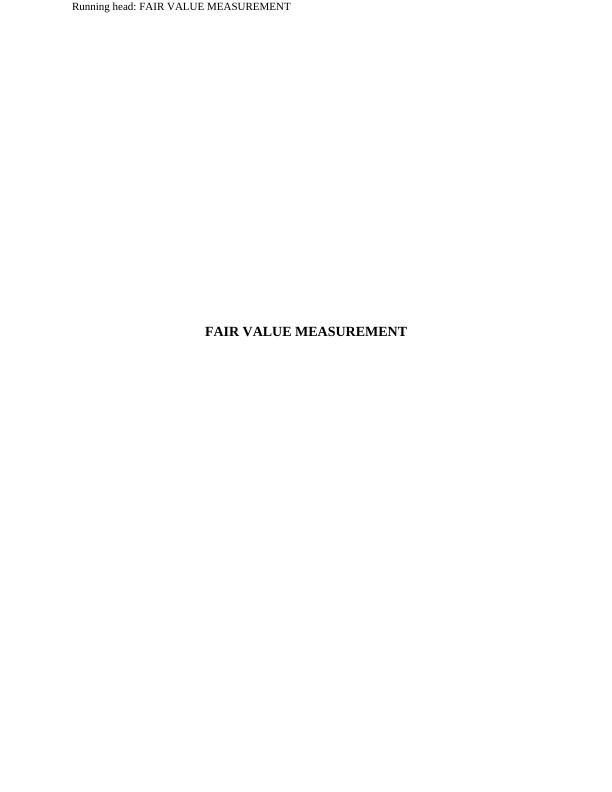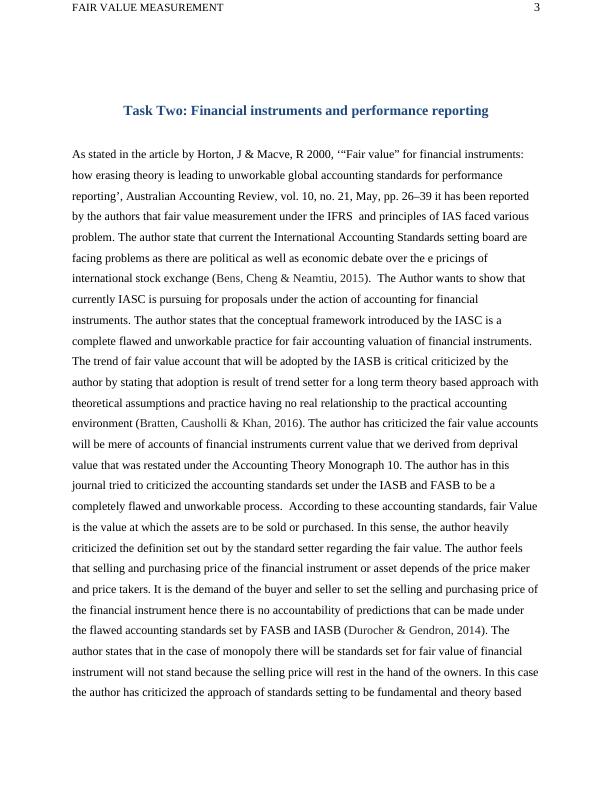Fair Value Measurement
Added on 2023-06-04
6 Pages1434 Words315 Views
End of preview
Want to access all the pages? Upload your documents or become a member.
Contemporary Issues in Accounting
|14
|3560
|147
Usefulness and Challenges of Fair Value Decisions in Financial Accounting and Reporting
|9
|2127
|124
Accounting Standard’s Role in GFC Report
|8
|2069
|86
Conceptual Framework for Financial Reporting: Definition, Advantages and Limitations
|6
|1255
|327
Financial Accounting Standard
|3
|512
|21
The Harmonisation of Accounting Standards
|16
|3014
|72



